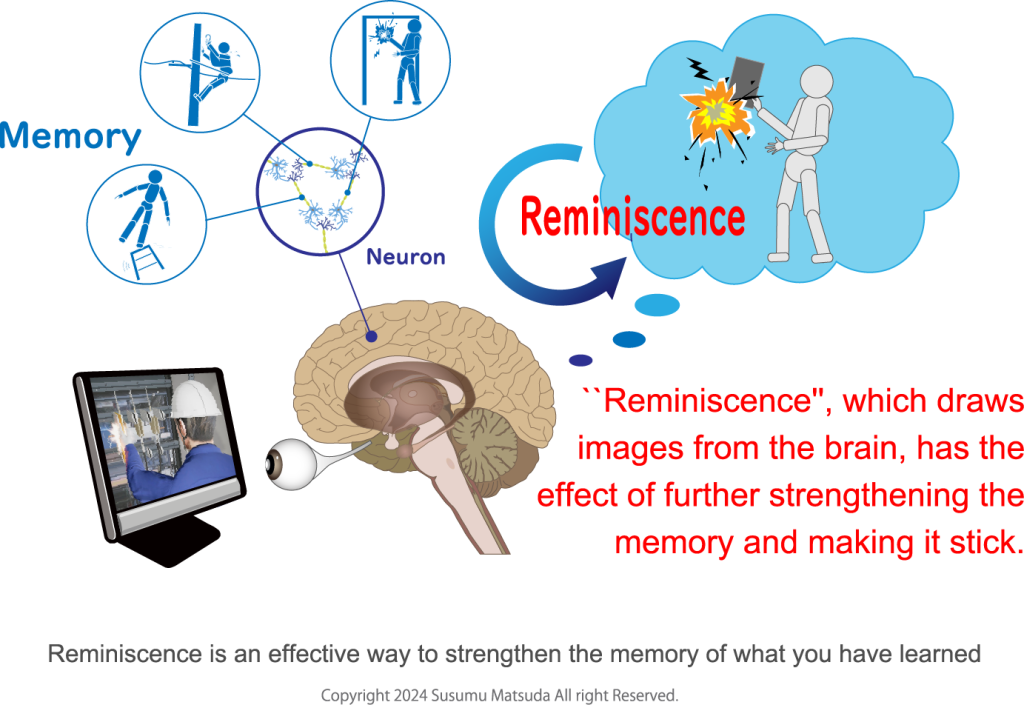For safety and security, it is necessary to understand natural phenomena and study the environment in which people live. It is also necessary to know the operating principles and phenomena of things in order for people to maintain a safe and secure state. In order to realize safety and security for people, it is also necessary to study disaster cases. By memorizing disasters that occur according to the environment and conditions as knowledge in the brain, it becomes easier to make decisions and take action when encountering a disaster, and it is possible to increase the survival rate. (There are several types of human memory, but please refer to the 82nd episode of the Safety Blog for an explanation.)

This time, I would like to think about how to improve memory through learning. I will introduce six methods to improve the learning effect based on cognitive psychology.
1)Distributed learning (spaced). Distribute learning content and time
2) Deepen understanding (elaboration). While asking why and having them explain
3) Memorize with pictures and words (dual coding). Image memory with words and pictures
4) Reminisce (search learning). Reminisce after time passes
5) Concretization (associating with examples): Associating concepts with specific examples
6) Interleave learning while switching topics
I would like to introduce a method to solidify the learned memory. Learned memories are stored in the short-term memory area (primary memory) of the brain. The body judges the importance of the information stored in the short-term memory area and stores only the necessary information in the long-term memory area. In addition, information stored in the primary memory area is reset and cleared by sleep, and temporary memories disappear. (For the mechanism by which the brain memorizes, please refer to Anshin Blog, Episode 202.) Information stored in long-term memory is decided and executed by the function of glial cells whether to keep it as a memory or erase it. (For the function of glial cells, please refer to Anshin Blog, Episode 203.) In order to solidify memories, it is effective to reproduce the image in your head by recalling the memorized image (≒ recalling), find the problem based on the recalled image, discuss it with someone while simulating the image of improvement, and think it over and over again. This image relearning using recall leads to the memory being solidified in the brain. Therefore, an educational method in which you share the image of what you have learned with your peers in your head and exchange opinions through discussion is more effective at solidifying memories.